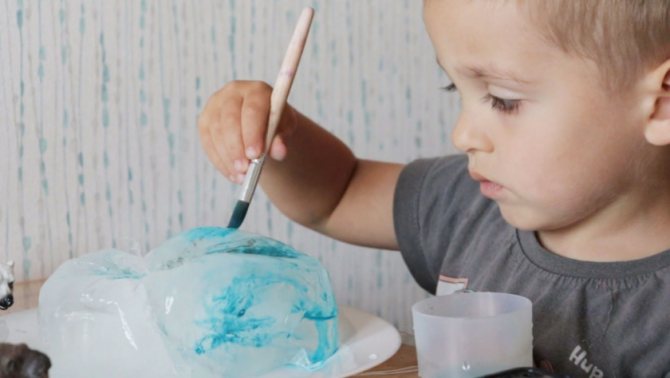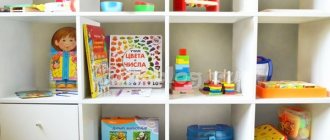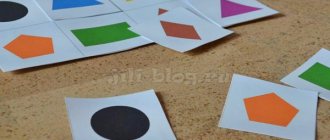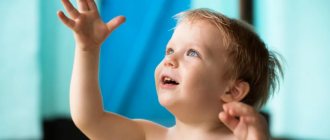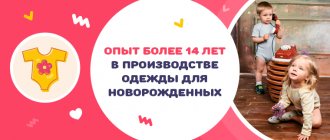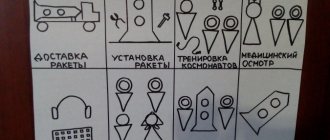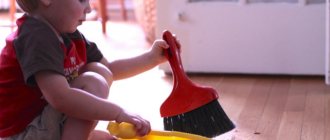When a child turns 3 years old, both parents and the baby themselves face tremendous changes. This is the famous crisis of three years, and a possible acquaintance with kindergarten, and for the first time truly meaningful behavior.
The pace of development of children is individual. Some three-year-olds already speak fluently, show interest in learning and strive for complete independence. Other children at the same age do not develop as actively, but this is not a deviation at all. However, there are general standards for what a 3-year-old child should be able to do. And if you are worried about whether your baby is developing in a timely manner, follow these standards and, most likely, you will make sure that everything is fine with your child!
Content:
- Basic skills of a child at 3 years old
- Physical development: main indicators Height and weight
- Physical skills
- Motor skills
A child is two years old: advice from a neuropsychologist
: Reading time:
An article by the neuropsychologist of our Center, Irina Anatolyevna Salnikova, in the magazine “Preschool Health Worker” (7, 2015) on the topic “A child is two years old: advice from a neuropsychologist.”
When a child turns two years old, an important period begins in the life of the family. Your baby has become an “adult”, he has his own opinion, he already knows a lot and is very inquisitive, i.e. actively strives to understand the world around him. And this requires a lot of patience and attention from parents.
As a rule, during this period, following the child’s activity, parents begin to intensively develop his cognitive skills (logical thinking, memory, speech), attending various developmental classes or conducting classes at home. However, we must remember: everything has its time and it is important not to overdo it, otherwise the proverb “If you hurry, you make people laugh” will be true. For example, the baby already knows many letters, but does not know how to eat on his own with a spoon or dress himself. A child develops in stages, and each period in development is very important and is associated with the knowledge, skills and abilities that he can acquire at a particular age. It should also be noted that developmental standards apply to most children, but not to all, because the development of each child is individual and depends on many factors. Therefore, dear parents, do not worry if at the moment your baby does not know how to do something, because only with the help of adults, i.e. you, he is studying.
Motor development involves assessing motor skills. At this age, the coordination and consistency of the child’s movements come to the fore, i.e. The better the baby can control and manage his body, the easier it is for him to explore the world around him and master new activities.
By the age of two, the child:
- knows how to walk, run (walks well in all directions, on uneven paths, steps over grooves, climbs hillocks);
- knows how to go up and down stairs, touching each step with one foot;
- knows how to jump (jumps up, jumps through a hoop or an obstacle lying on the ground);
- can kick the ball, throw it in a certain direction (for example, to another participant in the game or at the target), catch the ball with both hands;
- able to maintain balance on the crossbar;
- can ride a tricycle;
- can draw a vertical line;
- can build a tower or house from 4–6 cubes;
- knows how to cut paper while holding scissors with one hand;
- independently performs motor actions with objects on wheels (gurneys, cars, etc.).
The main goal at this stage is to continue to provide the child with freedom to practice coordination and develop dexterity. Closer attention should be paid to the development of fine motor skills. This is due to the fact that at this age there is a direct relationship between the development of small hand movements and the development of speech. In other words, by developing a child’s fine motor skills, you thereby contribute to the development of his speech.
At two years old, the following games and tasks can be offered.
- Learn to throw and catch a ball, throw it against a wall.
- Depict animal movements as shown by mother (jump like a bunny, wave your arms like a bird, stomp loudly like an elephant, crawl like a boa constrictor, etc.).
- Move around the room without touching objects scattered on the floor (for example, pillows), gradually increasing the pace and number of objects (like a labyrinth).
- Carry large but not heavy items (for example, a highchair, a light box of toys).
- Walking along a winding line drawn on the floor (or a strip of paper) develops coordination.
- Game "Catch the Sun Bunny". Play with the sunbeam that mom lets out.
- Collective outdoor games: dance in a round dance, run like a train after each other (children hold on to each other), games of “catch up”, wolf and hare, etc.
- Climb on sports walls at home, on playgrounds.
- Draw (with finger paints, crayons, pencils).
- Sculpt, make appliqués.
- Play with frame inserts.
- Learn to unfasten buttons, zippers, buttons (if you are interested and succeed, then fasten them).
- Take off socks, hat, gloves, learn to take off and put on other clothes.
- Pour / pour cereal / water into different vessels, learn to use a funnel, a jug, a teapot from children's dishes, a watering can for pouring / pouring.
- Play with mosaics, Lego, and other constructors.
Various pyramids, insert frames, sorters and many other games are still relevant for the development of fine motor skills - it all depends on your imagination and capabilities.
Cognitive development considers the characteristics of mental processes (memory, attention, speech, thinking, perception). At this age, the leading mental process is speech, which significantly influences the intellectual development of the child as a whole. Remember how your baby is interested in the names of certain objects, tries to repeat various words and actions after you - this is how he learns about the world around him and its features. Psychologists call the period from one and a half to three years sensitive, i.e. sensitive for active speech development. At this age, the brain structures responsible for speech are most susceptible to the influence of an environment that promotes the acquisition of the native language.
At two years old, a baby can usually:
- distinguish objects that are contrasting in shape, color and size;
- navigate 4-5 colors, shades and name some of them;
- distinguish 4–6 geometric shapes and name some of them upon request;
- assemble a children's pyramid consisting of 4–8 rings and a four-part matryoshka doll;
- match planar geometric shapes to volumetric shapes and vice versa;
- fold a cut picture from 2-3 parts (cuts horizontally and vertically);
- find an object based on its characteristics (soft, hard);
- create a simple mosaic pattern;
- understand words denoting the number of objects, for example, “two”, “three”, etc. and relate the number to real objects;
- freely navigate in a familiar room;
- be neat and adhere to the rules of personal hygiene (brush teeth, wash hands, etc.);
- notice changes in the weather and name them;
- actively participate in cleaning the apartment, caring for animals and plants;
- recognize characters by onomatopoeia, for example, “mu-mu”, “woof-woof”, etc.;
- correctly pronounce all speech sounds (there may be exceptions in the pronunciation of hissing and whistling sounds, as well as the sounds [r] and [l]);
- name objects, actions, qualities;
- use all parts of speech (except participles and gerunds);
- tell fairy tales, poems, short stories about events from your life, animals, etc.;
- repeat words and phrases after an adult;
- remember the words of songs, dance movements;
- understand what is shown in a picture or illustration, and look for a real object upon request;
- create simple drawings (various lines located in one or several directions).
In general, at this age it is important to talk a lot with the child, telling and showing various properties of objects, since only with the help of an adult can a child master the above skills. However, it should be remembered that the leading activity of a small child is play, so all developmental activities should be carried out in a free play form.
Observe what is interesting to your baby now: he wants to draw or play with cars, dolls and, following his interests, get involved in the game, for example, show him a red cube and offer to build a tower only from red cubes, etc.
You can also offer your child the following games and tasks:
- Putting together elementary puzzles or cut-out pictures from 2-4 pieces (this skill develops gradually and becomes more developed closer to three years; at first, the mother helps the child).
- Learn to match - play the games “Who eats what?”, “Where is whose house?”, “Where is whose tail?” (with cards or in pictures in books and manuals).
- Play riddles - the mother describes an object or animal in the simplest form, the child guesses it from the description (for example: “Small, fluffy, with long white ears, jumps like that and eats carrots. Who is it?”; “Who says: “Moo?” -mu“ and gives milk?”, etc.).
- Stack several nesting dolls and cups into each other.
- Build a tower from cubes and cups.
- Learn to classify objects according to a general characteristic (for example: cards with pictures of toys, food, animals are laid out in front of the child). The child is asked to put them into appropriate groups (for example, toys in a box, food in a “refrigerator”, animals in a “house”). At first, the child learns to lay out objects with the active help of his mother. In order for the training to be successful, it is better to play with the same set of objects for a long time (for example, to start with sorting cards of only toys and food for a long time).
- Games with a simple construction set and other suitable objects (toys, pasta, buttons, beads, etc.) by type: find objects, figures of the same shape; find objects, figures of the same color; find objects, figures of the same size; find the same figures but in size, thickness and other characteristics.
- Play “find” - an adult asks the child to find some object in the room (“Find where your teddy bear is, where the red cube is”), on the street (we look through the window - “Find where the dog is walking? Find the red car!” "), search in a picture in a book, etc. You can play anytime, anywhere.
- Play hide and seek with the child (hide so that the baby can easily find it, prompt the child by calling him with your voice).
- Search for what is missing. The child remembers the pictures (toys) laid out on the table and guesses which picture the mother hid. Memorizing objects is carried out in a playful way - an adult tells a fairy tale about objects that are laid out on the table; listening, the child manages to remember its characters well. After this, mom takes one of them and asks: “Who is missing?”
- Say what has appeared. The game is played on the same principle as the previous one, but the object is not hidden, but added. You need to determine which toy mom added.
- Together with the mother, remember what the child did yesterday, in the morning, some time ago, what events happened on the street (which friends were out today, what toys they had, etc.).
Social development includes the child’s ability to communicate with other people (adults, peers). At two years of age, the baby's social contacts are enriched based on ongoing cognitive development and familiarization with the environment.
So, by the age of two, the child:
- shows a need for the benevolent attention of an adult and communication with him (the baby does not want to let his mother go anywhere, he waits for her approval and attention);
- expects adult communication regarding actions with objects, implementation of play plans, discovery of new properties of familiar objects and experimentation with them;
- expresses his will in situations “I want” or “I don’t want”, but easily responds to an adult’s persuasion to show a little patience, to give in on something, i.e. to find a compromise;
- in many play situations, he shows not only his own initiative, but also a willingness to follow an adult and obey his demands;
- begins to show some restraint, the ability to wait a little, i.e. some ability for basic independence and self-organization;
- can enter into short contact with peers (observes the actions of other children, tries to imitate them, can share a toy);
- recognizes himself, familiar adults and children in photographs, remembers their names (mother Masha, grandmother Lena, etc.);
- knows his name, can call himself. For example, to the question: “Who did this?” can answer in the third person: “Masha did”;
- begins to understand his gender identity: boy or girl.
At this age it is important:
- draw the child’s attention to other children, awaken interest and sympathy for other children (“Look, what a girl! Let’s get to know her! What’s your name?”);
- meet peers on the playground, encourage them to play together - swing on a swing together, play in the sandbox, etc. At this age, children will not be able to play together independently; for this they must be helped by an adult;
- teach to exchange toys, respect the property of others, respect your right to play with your toy;
- teach to feel sorry for another and empathize with his grief (to feel sorry for a boy who has fallen and is crying, etc.).
Thus, by the age of two, the baby knows a lot and begins to show independence, but is still very attached to his parents, therefore, for harmonious development, he needs the attention, approval and care of his parents even during the learning process. Therefore, in the process of development, education and upbringing of a child, it is important to adhere to the following principles:
- notice even the smallest achievements of the “young researcher” and sincerely praise them for them;
- conduct developmental activities in a playful way, since the leading activity at this age is play;
- There should be enough toys, but not too many - the main thing is not the quantity, but the quality of the game. At this age, the main thing for the baby is that the parent plays with him. Therefore, even if he has only three toys, but his parents play and talk with him, the development process will go much faster compared to the situation when the child has a whole room littered with toys, but he plays with them alone. In addition, a large number of toys provokes a problem of choice and makes it difficult for the child to concentrate during class (he will be distracted);
- when choosing games and toys for activities, proceed from the interests of the child at this moment. For example, if he is interested in cars, you can take different colors, sizes and on this material, for example, study colors, shapes, purpose (truck, car, transport). Toys, games, books should be bright to attract the child’s attention, and located in a place accessible to him;
- engage in development when the child wants and can, and, most importantly, how he wants. Any skill (memory, thinking, speech, etc.) can be developed in many ways and there is always something that is interesting to the child now (for example, if he doesn’t want to draw now, you can replace this activity with modeling, design, which also develops fine motor skills, perception, speech);
- don’t be equal to your peers: everyone has their own abilities and capabilities, and even if your baby doesn’t know how to do something now, like most of his peers, it’s okay, because he can do something else, and he’ll learn this a little later. Remember: the pace of development of each child is individual;
- develop any skill from simple to complex. For example, learning to distinguish colors can be divided into the following stages: a) studying one color on an object material (for example, cubes - find the same color as mine) when choosing first from two colors, then from three, etc.; b) studying the same color in pictures by analogy with the previous stage; c) color designation: “What color is this cube?”
And only then do we begin to study another color, etc.
So, at two years old, a child develops everywhere and always, one might even say around the clock, so a lot depends on your imagination and desire to devote time, and then everything will work out for your baby.
Basic skills of a child at 3 years old
What a child should be able to do at the age of three - basic standards:
- understand simple cause-and-effect relationships, for example, “fell in a puddle - got dirty”;
- begin to strive for independence: try to dress yourself or with minimal help from an adult;
- actively expand your vocabulary, use complex sentences in speech, for example: “We didn’t go for a walk because it was raining outside”;
- know the basic colors and the words that these colors represent;
- recognize obstacles in the area - for example, steps, curbs - and overcome them;
- be able to show emotions and control emotions, show empathy;
- understand the meaning of the words “mine” or “his/her”
- play role-playing games - for example, “teacher-student”, “doctor-patient”.
Making slime
I didn’t make slime today, perhaps only because I was lazy. Try our 10 DIY slime recipes to bring joy to your child and keep him occupied with an exciting activity.
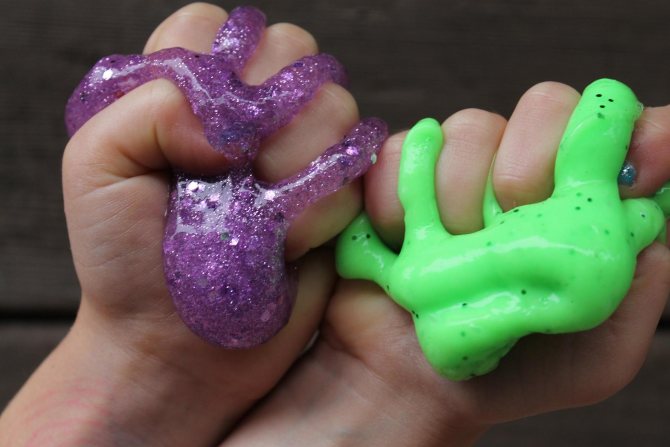
www.kleo.ru
Be sure to follow safety precautions, make sure your child does not put anything in their mouth, wash their hands thoroughly, and use only safe ingredients. Don't leave kids unattended!
Physical development: main indicators
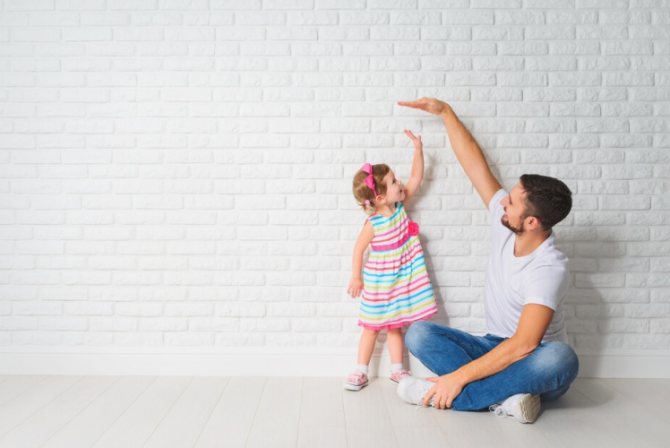
The physical development of a child is assessed according to three main criteria: height and weight, physical abilities, and motor skills.
Height and weight
The height and weight of two children at the age of three can differ significantly - these physical parameters depend on hereditary factors and, to a lesser extent, on the child's gender and lifestyle. In pediatrics, the “golden mean” for the weight of a three-year-old is considered to be 15 kilograms, for height - 95 centimeters .
If your baby’s height is 10% less than the standard 95 centimeters, this is not a cause for concern, but, most likely, a personal developmental feature. But if your son or daughter’s height at 3 years is less than 85 centimeters, you should think about eliminating negative factors: try to adjust the baby’s diet and organize reasonable physical activity for the child, after consulting with a doctor.
In the weight parameters for a three-year-old child, deviations of 20% are allowed in both directions from 15 kilograms. If the baby’s weight is less than 12 or more than 18 kilograms, you may need to reconsider the diet, taking into account the recommendations of pediatricians.
Physical skills
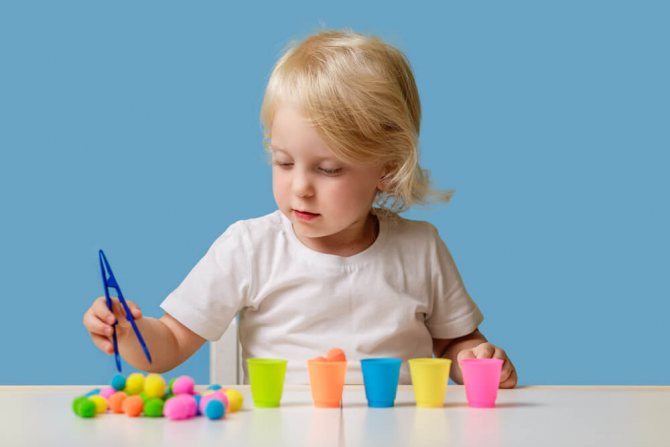
Basic physical skills of a three-year-old:
- knows the terrain well enough, remembers familiar routes;
- draws and makes simple appliqués himself;
- knows how to ride a tricycle:
- claps his hands and stomps his feet well;
- With the help of his parents, he assembles quite complex construction sets, and also puts together multi-part puzzles with outside help.
Motor skills
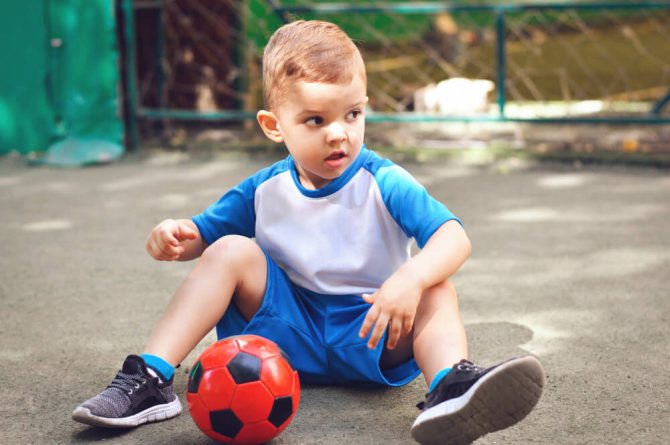
By the age of three, the child’s motor activity develops noticeably even compared to the period of several months preceding the third birthday. Basic motor skills of a child at three years old:
- maintains balance while standing on one leg;
- climbs and descends stairs without assistance;
- plays various ball games;
- runs, rarely stumbling and falling;
- repeats simple dance movements: jumps, rises on tiptoes.
Games for children from 5 years old
Stringing hearts. Cut out hearts from colored paper. We make a hole in each heart and string it on a cord. We hang the chain.
Outline the hand. We place our hand on the paper. Draw along the outline with a pencil. Cut out and paint with colorful patterns.
Let's draw little people. We wet our finger. Then we dip it in ink and press it to the paper. We draw a little man from the print: we finish drawing the face, arms and legs.
We put up gates from bottle caps. We install a corridor of several gates. To do this, we put two caps together. We push the coins through the gate with our finger.
We count cars. We look out the window. We make a bet on how many cars (or how many cars of a certain color or model) will pass by the house over a period of time.
Guessing the animals . Each one depicts an animal. Others must guess which one.
Game of steps. We climb the stairs step by step. We come up with a name for each new step.
Toy money. We put the coins under the paper. Using a soft pencil, rub over the coin. We cut out paper money.

Swing. One lies down on the blanket, the others lift it higher and swing it.
A room out of a box . We make a room out of a cardboard shoe box. We draw furniture on paper, cut it out and paste it into the box.
Matchbox beds . We make cribs from matchboxes, and cut out suitable size pillows and blankets from paper. We draw little people on paper, cut them out and put them in bed.
We make paper animals. We draw any animals on thick paper. Cut it out. Glue a strip of cardboard as a stand.
Mosaic . Cut out a rectangle from paper. Then cut it into 10 pieces of different shapes. Mix the pieces. You need to make a rectangle out of the pieces again.
|
Development of fine motor skills
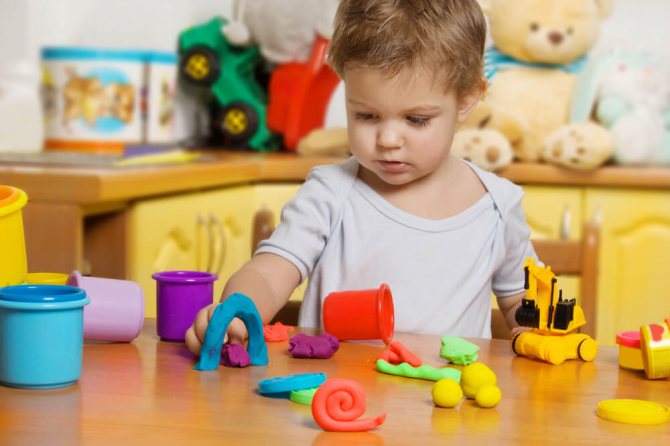
The fine motor skills of a three-year-old are becoming more and more perfect. The child develops previous skills and acquires new ones:
- enjoys repeating finger gymnastics exercises;
- reinforces speech with gestures, and if the baby is emotional, gestures can be very active;
- builds buildings of different sizes and configurations from cubes;
- learns to use scissors and can cut out simple shapes from paper;
- knows how to sculpt simple structures from plasticine: flagella, balls;
- confidently grasps and holds objects;
- opens loose caps on bottles.
conclusions
By the age of 3, a child develops many new skills and abilities. The baby becomes more and more independent, he gradually learns to take care of himself. A three-year-old child controls his body quite well; he can maintain balance, run, jump, and play ball. The baby’s cognitive abilities also improve: thinking becomes imaginative, memory, attention, speech, and imagination develop. Communication with people reaches a new level, children become interested in communicating with peers.
Development of hearing, vision, touch, taste
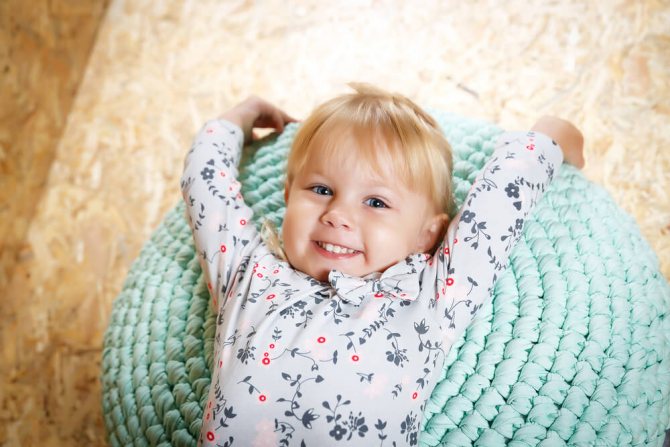
The hearing of three-year-old children requires especially careful attention. At this age, children often catch colds, which can lead to otitis media and, as a consequence, hearing impairment.
In order not to harm your child’s hearing, be sure to teach him to breathe through his nose and not his mouth, treat a runny nose in a timely manner and try to avoid sudden changes in temperature.
The vision of three-year-old children is not yet sharp enough compared to children of older preschool age. Vision is fully formed only by 6-7 years. You should not try to teach your child to read as early as possible - children's vision is ready for reading only at the age of five . Of course, you can show books to a three-year-old, but the books must use large font. To preserve fragile children's vision, reduce your child's contact with the phone, computer, and TV.
At 3 years old, children’s sense of touch is well developed: they distinguish between cold and hot water, warm and cold wind, rough and smooth surfaces. The taste buds of a three-year-old child are developed in the same way as those of an adult. It distinguishes between sweet, bitter, sour and salty tastes, preferring sweets.
How to exercise at home?
The developmental lesson should take place in suitable conditions: in good lighting, in a ventilated room. The TV and computer need to be turned off, toys should be put away so that nothing distracts the baby. Make sure your child has had a good night's sleep, is not tired, and is not hungry or thirsty. Try to have your classes regularly, at the same time, because three-year-olds are very sensitive to changes in routine.
If a child refuses to complete the proposed tasks, do not force him, occupy him with something else. After some time, try again, most likely it will be successful.
Norms of speech development
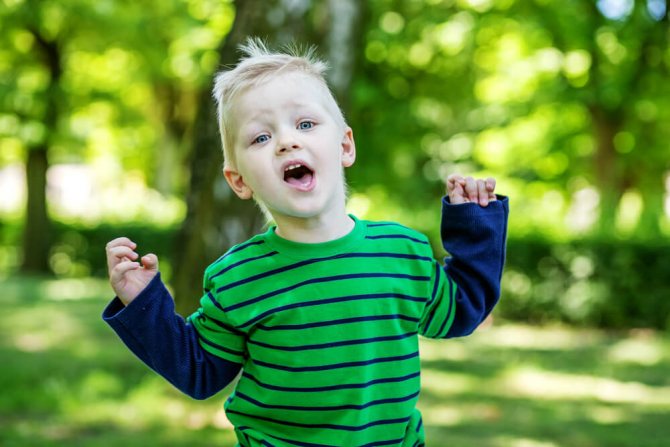
A three-year-old child already has a fairly rich vocabulary: at least 1000 words. The clarity of speech at this age is not yet impeccable: the baby may distort words and have difficulty pronouncing individual sounds correctly. A three-year-old is already able to reason in a simple form about an object or event he saw.
A 3-year-old child does not speak or speaks little: what to do?
At three years old, a child’s speech skills are sufficiently developed to be able to communicate with other people. Normally, by the age of three years, a child has the following speech skills:
- understands the questions asked and answers them;
- knows his first and last name well;
- speech becomes coherent, resembling a story: one sentence follows from another;
- describes the picture he saw, paying attention to details;
- retells short tales and stories.
Children who speak almost or not at all by the age of three are quite common. The famous Russian pediatrician Evgeniy Komarovsky advises parents whose children at 3 years of age do not yet speak to pay attention to the type of stubborn silence: is the child silent because he does not understand the speech of those around him, or does the baby understand everything, but says nothing?
If a child shows signs of understanding without using words, perhaps silence is his personal trait. Three-year-old silent children, according to pediatrician statistics, are more common among boys—for every one non-talking girl, there are four such boys. According to the same statistics, at least 7% of children aged three years do not speak at all.
In any case, if a three-year-old child does not speak at all, you need to visit a pediatrician with him. Based on the examination results, the doctor will recommend ways to solve the problem or refer you to specialized specialists.
Barber shop, beauty salon game
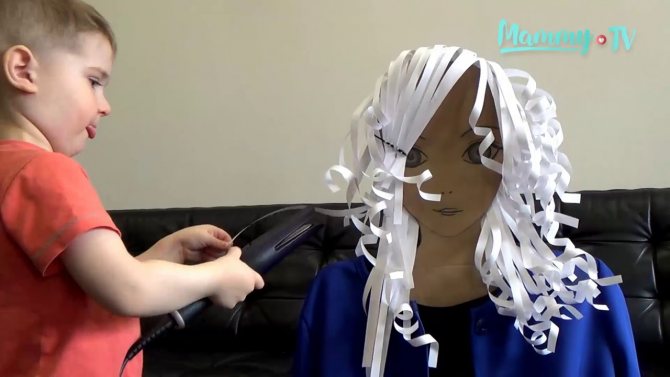
www.youtube.com
Some children can spend a long time combing dolls, doing their hair, makeup, and painting their nails. Give your fashionista a small beauty salon at home, and joy will know no bounds. If you like someone to comb you, you can become a “client” of the master yourself. By the way, boys grow up to be excellent stylists, so don’t be afraid to give them a hairdryer and rubber bands.
Communication skills and emotional sphere
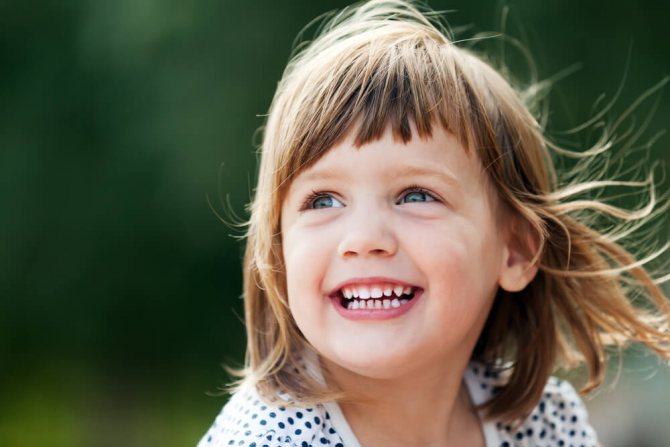
A three-year-old child needs to communicate with peers more than before. The child is already learning to manage emotions and trying to resolve conflicts peacefully. At the same time, the three-year-old feels an urgent need to express his “I”, which leads to capricious behavior towards parents and other close people. Closer to four years, the child begins to understand other people's emotions, learns to control himself and excessive whims disappear.
The emotional sphere of three-year-old children is actively developing: they begin to fantasize. The guys with the richest imagination even surprise others with stories of their own creation. Normally, an emotionally developed child at 3 years old strives to repeat the actions he likes after other people, and knows how to express likes and dislikes.
Development of memory and imagination in children 3 years old
Children of this age have the best developed emotional memory. A 3-year-old child remembers well what evokes vivid emotions and impressions in him. It's no secret that preschool children have very developed imaginations. Most of the time, three-year-old children are in the world of their fantasies. However, this also has a negative side; children can be very impressionable, which is why many fears arise that are characteristic of preschool age (fear of the dark, dogs, thunderstorms, etc.).
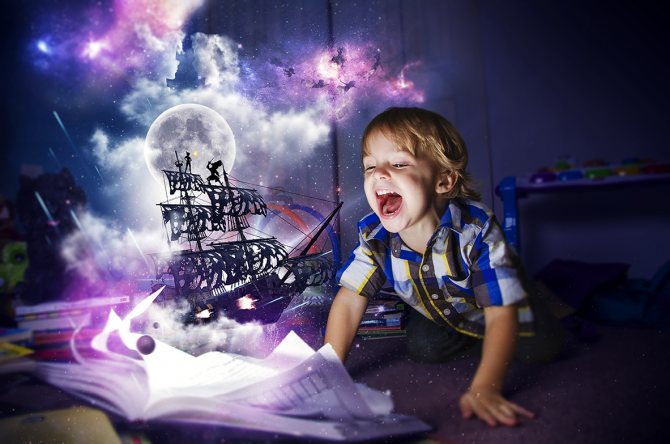
Mental development
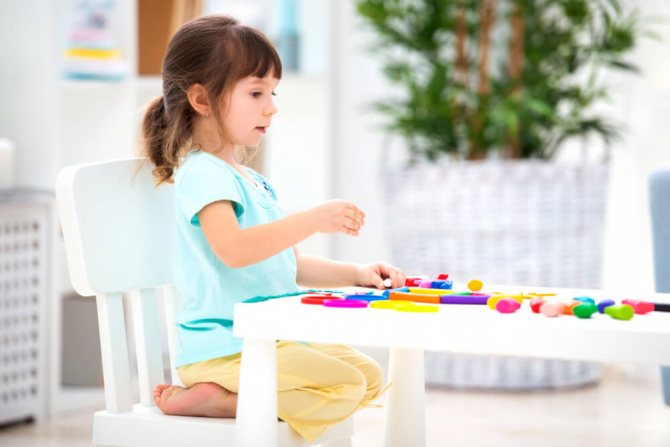
Along with the crisis of three years comes the age of “why”. The child asks adults about everything in the world, compares the answers, and draws conclusions.
The pace of mental development in different children may differ depending on the child’s personal abilities and the involvement of adults in the development process. Intellectual development at the age of three is considered normal if the child can:
- distinguish 4-8 colors;
- examine the object not only as a whole, but also notice details;
- do not be distracted too often, concentrate on one activity;
- make simple plans, for example: “in the morning we will go to kindergarten, and in the evening you will take me home”;
- count to five;
- find answers to children's riddles;
- operate with the concepts of “more-less” and find other differences between objects;
- memorize simple poems and songs;
- distinguish basic geometric shapes from each other - circle, triangle, rectangle, square - and name them.
Speech
What should a child learn?
- Sentences must be at least 5-6 words.
- The child must be able to name his personal information.
- Clearly distinguishing the characteristics of an object.
- Knowledge of several actions (walks, cries, talks, meows, etc.).
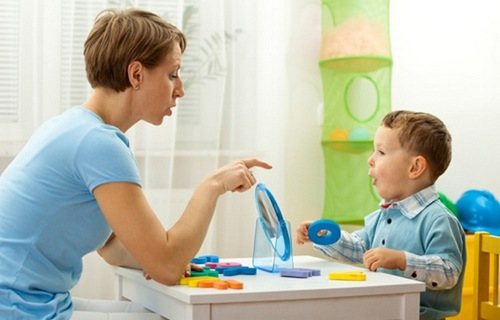
If you practice at home, prepare cubes or cards with letters so that your baby continues to form words from them. Remember that three-year-old children still do not have very well developed memory, so do not ask your child to spell out complex words or repeat long sentences
Cognitive development
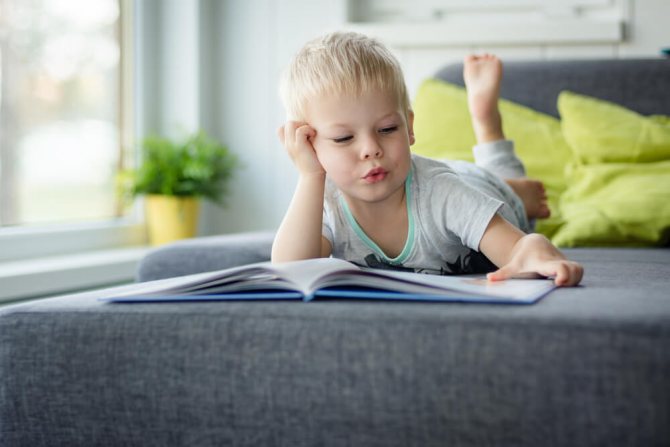
Children's cognitive skills include the development of perception, attention, memory, and thinking. The speed of cognitive development is influenced by the child’s exploration of the world around him: the more the baby interacts with different objects and the more he observes different phenomena, the better his cognitive abilities develop.
It is important for three-year-old children to experience the world in practice, which is why it is so important to reinforce the child’s personal experience with explanations from an adult. For example, explain the difference between opposing concepts (“narrow path - wide road”), encourage the child’s desire to analyze situations and events, and focus on specific details of objects.
At the age of three years, a child, with the help of perception, forms an idea of the properties of objects. He learns to compare the sizes and shapes of objects, knows the purpose of different things and uses them correctly.
The baby's attention becomes stable: he focuses on an interesting activity for 10-20 minutes, does not let several objects out of his sight at the same time. But a three-year-old can still get distracted quite easily.
Memory at three years of age is involuntary: a child remembers information that is interesting to him, but it is not yet easy for a child to learn something specifically.
Although the child can already establish cause-and-effect relationships, his thinking is still limited to the present time. A three-year-old child evaluates the situation “here and now,” but as the child learns about the world, his ability to analyze gradually develops. At the age of 3, children especially clearly feel the joy of a discoverer, and the more events that happen around the young explorer, the better his thinking develops .
Hide and seek
Brain development occurs through movement. It is important for a child to move in space. This is how he masters in practice the concepts of “higher”, “lower”, “closer”, “further”, “to the right”, “to the left”. And the easiest way to understand this is through your own body.

www.rastishka.ru
- Why you need to play hide and seek with children: games for kids 2-3 years old
Independence, self-care skills
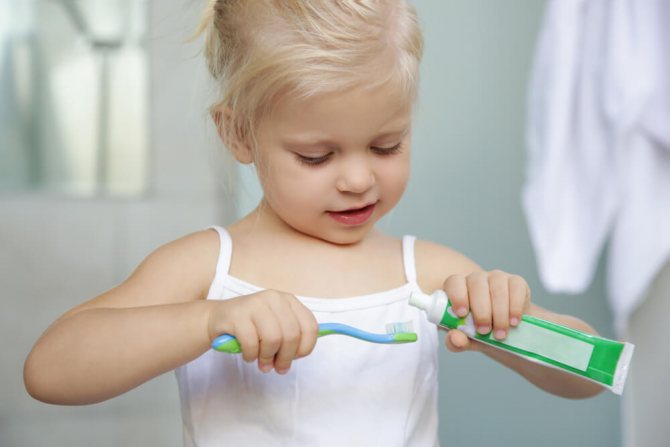
Young children are not yet able to take care of themselves completely, but by the age of three, the child should already have some self-service skills:
- undress and dress with little assistance;
- put on shoes or at least try to put on shoes on your own;
- wash your face and brush your teeth;
- use cutlery;
- fulfill simple everyday requests: put away toys, put things in their place, put a cup on the table.
Daily routine and care for a three-year-old child
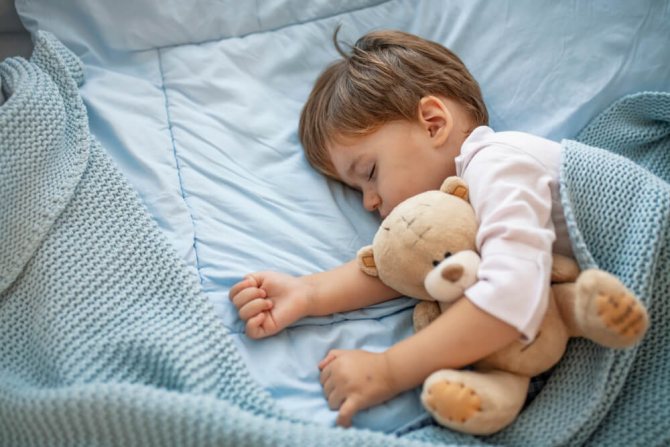
The baby becomes very active, and it is important to adhere to a daily routine so that the child has enough strength. Of course, the routine of a child who goes to kindergarten will differ from the routine of a child who does not attend preschool, but an approximate daily routine for three-year-olds could be like this:
| 07.00 | Climb |
| 07.30 | Hygiene procedures, exercise |
| 08.00 | Breakfast |
| 08.30 | Educational games and activities, help with everyday life |
| 10.00 | Walk |
| 12.00 | Dinner |
| 12.30 | Daytime nap |
| 15.00 | Awakening |
| 15.30 | Afternoon snack |
| 16.00 | Outdoor and educational games |
| 18.00 | Walk |
| 19.00 | Dinner |
| 19.30 | Quiet activities |
| 20.30 | Hygiene procedures |
| 21.00 | Night sleep |
⠀
Home huts

remoskop.ru
You don't have to buy an expensive wigwam or pitch a tent in the center of the living room to keep your baby busy with play. Build a house from scrap materials.

spim.ru
A hut made of blankets is a simple and at the same time ingenious invention for a child or a group of children. Hang a garland, dim the lights - that's romance. In such a house you will probably want to read a book, hug each other, and tell in a half-whisper an invented horror story or adventure story. You can even have an overnight picnic.
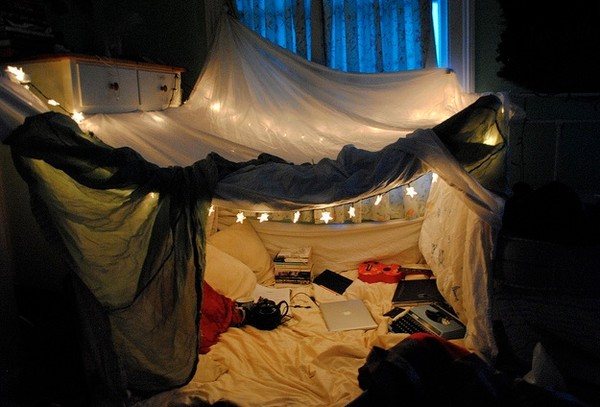
otvet.imgsmail.ru
You can make or order very cute wigwams yourself that will fit into the interior of any children's room. If you take care of a warm bedding, you can even sometimes allow the child to sleep in such a house.

www.sidimdoma.net
How to determine the developmental delay of a child at 3 years old?
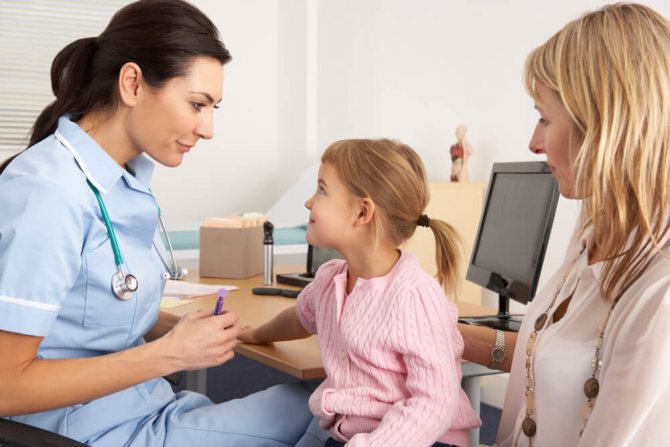
Signs that may indicate problems with the baby's development:
- he is not interested in communication - neither with adults nor with other children;
- does not play with toys, does not show curiosity about unfamiliar objects;
- does not even recognize familiar objects;
- cannot even minimally control the expression of emotions;
- does not understand the speech of others.
If you notice similar signs in your child, contact your pediatrician.
How to help a child develop correctly?

It is possible and necessary to help a three-year-old child develop - despite the desire for independence, children at this age willingly accept help from adults. Especially if this help is presented in the form of a game.
How to help three-year-old children develop important skills and abilities in accordance with the recommendations of teachers:
- Ask your child to tell you in detail how his day went. This technique trains memory better than special educational games.
- Resist in offering help. The less outside help, the faster the three-year-old will learn independence.
- Use your fingers to learn to count within five, and a little later - up to ten.
- In toys, give preference to pyramids, cubes, puzzles - they perfectly develop the skills of attentiveness, perseverance and spatial thinking.
- If there are no health contraindications, introduce your son or daughter to sports. Swimming is especially suitable - a universal way to maintain health, form beautiful posture, and strengthen all muscle groups.
Do not worry about the development and safety of your child, especially when he is away from you or home. Three years and going to kindergarten is a great reason to buy your baby his first GPS watch. With them and the “Where are my children” application, you will always know where your child is and what is happening around him.
Games

Play is the most important activity for a three-year-old child. At this age, the child enjoys the process exclusively, without setting a goal to learn new things. But parents can offer their son or daughter games that will help children's development.
Examples of educational games for three years:
- Games with water. Kids love to be in contact with water - help your little ones create their own water world. You can include bowls, glasses, a colander, and a spray bottle in the game and show how to play with water using these items. Water games develop imagination, coordination, and fine motor skills.
- Finger games. Classes with elements of finger gymnastics, like no other, develop fine motor skills.
- Modeling from plasticine or salt dough. Modeling helps develop creativity and fine motor skills.
- Games with cubes of different shapes and sizes. While building with cubes, reaction speed develops, the baby remembers colors and shapes, learns to compare objects and masters counting.
- Puzzles and mosaics. Starting with simple options, move on to more complex ones with more details. Puzzles and mosaics develop the ability to concentrate, develop imagination and fine motor skills.
Another feature of this period of child development is the three-year crisis. It is not simple. But you need to survive it, showing patience and helping the baby develop. And when the difficulties are left behind, the child will become an excellent conversationalist, play partner and best friend for his parents!
Exciting online tasks for children 2-11 years old are waiting for you!
Go to classes
Don’t know what to do to keep your child occupied at home to benefit his development? The Ikyushi team of teachers has prepared a lesson plan on the key 10 areas of development, which you can use for the development and learning of your child.
Download printouts, do offline exercises and practice with IQ.
Plans will help structure and diversify activities at home, provide an alternative to cartoons and videos, and following these plans will certainly contribute to the harmonious development of the child. Keeping your child occupied so you can do household chores and devote time to yourself has become easier with our ready-made ideas!
Please share your feedback and suggestions for what to add to the lesson plan in the comments, share it with your friends and, of course, leave your ideas for at-home games and exercises for fun learning for other readers!
